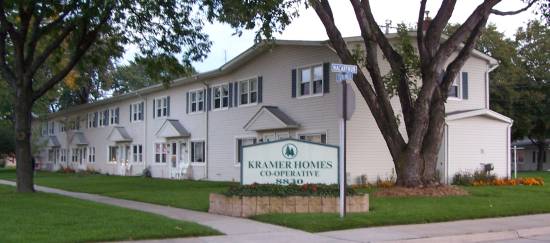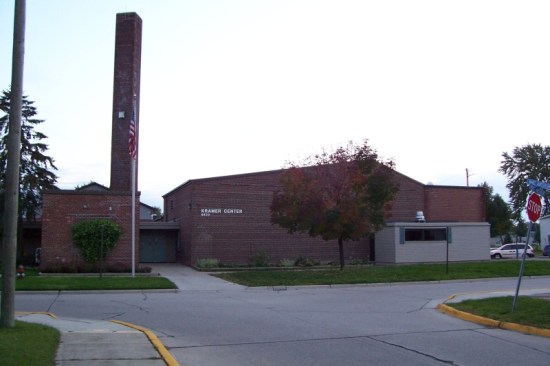Mustangford Member Username: Mustangford Post Number: 6 Registered: 08-2007 |
Hi All! Any one out there a Legacy of Kramer Homes in Centerline? I lived on Pershing Street till 1977. Was an interesting place to grow up! | ||
Mikeg Member Username: Mikeg Post Number: 1924 Registered: 12-2005 |
 | ||
Danny Member Username: Danny Post Number: 7812 Registered: 02-2004 |
Kramer Homes is nice and well kept suburban white dominate boondocks. Co-operative dwellings from the $5,000 and up with a deposit. It's not ghetto-ized but beautiful all over. | ||
Mustangford Member Username: Mustangford Post Number: 7 Registered: 08-2007 |
In the 70's it was well on its way to be Geetoized. I remeber my folks paid $60.00 a month for a 3 bedroom place. | ||
Mikeg Member Username: Mikeg Post Number: 1925 Registered: 12-2005 |
Here are some real facts about the origins of the Kramer Homes Cooperative instead of an "opinion" from someone who has most likely never even set foot in the place. Kramer Homes Defense Housing Project, Center Line, MI | ||
Mustangford Member Username: Mustangford Post Number: 8 Registered: 08-2007 |
Thanks Mike! Very informational, like I said I lived there (even went to Kramer School) both old and new buildings. I am glad to see they have really upgraded the place and are taking care of it. When I was there 1965 thru 1977 it was a great place to grow up, lots of kids to play with and a big field as well, many baseball, football and games of war were played in that field. Along with Red Rover and other games we made up along the way. We could stay out till the street lights came on. We were also allowed to go to Chester's (corner store Federal and 10 Mile) for Candy and such. The place was a true neighborhood. | ||
Mikeg Member Username: Mikeg Post Number: 1926 Registered: 12-2005 |
What follows is a more detailed history of Kramer Homes that I have summarized from an article that appeared in the City of Center Line Silver Jubilee book, July 1961. Kramer Homes was built in 1941-1942 by the Federal Government's United States Housing Authority to provide housing for the great influx of defense workers caused by the construction of the US Army Tank Plant on Van Dyke Ave. in Warren Township, Michigan. On July 26, 1941, the Federal Government instituted condemnation proceedings to purchase 53 acres of land that was part of the Bousson Farm on Ten Mile Road at Lorraine Ave. The owners were ordered to surrender possession of the land on Aug. 1, 1941 and on Sept. 10, 1941 the Government paid $31,835.00 for the property. Under the Authority of the Lanham Act, design and construction began on a housing development that would provide homes for nearly 500 families. Eliel and Eero Saarinen produced plans that provided one-story twin houses and long, two-story buildings that contained six to eight dwellings. The development plans included recreation areas, parking, a school plus a meeting hall. The circular street pattern and large lawn areas made for a pleasing appearance. The housing project was named after Father John F. Kramer, who had been pastor of nearby St. Clement Roman Catholic Church from 1890 until his death in 1929. The first residents moved into Kramer Homes in February of 1942 and paid rents of $32 to $35 per month. The finished development was managed by the Federal Housing Administration on behalf of the Federal Government. With the end of the war in 1945, Kramer Homes and their residents faced an uncertain future. The development was originally intended as housing for defense workers and with the conversion of factories to peace-time production, the Government was taking its time deciding what to do with the many defense housing projects nationwide. Finally in August of 1948, after passage of Federal Legislation that opened the way for government disposal of the many defense housing developments, a residents committee representing Kramer Homes submitted a $1.2 million purchase offer to the Government for the entire property. The next 21 months were spent planning, organizing and financing the Kramer Homes Cooperative which would officially own the development after its purchase from the Government. In May of 1950, the Kramer Homes Cooperative was officially dedicated. Current occupants of the homes would have the opportunity to join the Cooperative through a $350 membership fee and then lease their home for a monthly payment of $35, $38 or $40.50, depending on the type of dwelling. In September 1950, the Co-op hired a professional manager, Harry Tomlinson. In June of 1961, Mr. Tomlinson reported that - monthly leases were still the same as they had been at the beginning - the mortgage principal had been paid down to $530,000 - Co-op resident's equity amounted to about $900 for each unit - the mortgage had been paid in advance through Aug. 1965 - the Co-op was on track to have a grand mortgage burning in 1968 - following the retirement of the mortgage, new pitched roofs and siding would be installed on all buildings During the 1950s and 60s, the residents of the Co-op had their own credit union (Kramer Homes Federal Credit Union) and a newspaper called the "Thirteen Streets" to keep them fully informed of their Co-op financial status as well as the latest gossip. Their children attended the Kramer Elementary School which was part of the Van Dyke School District and was conveniently located on-site. They were less than a half-mile from a Kroger supermarket plus the various stores, services and professional offices that lined the Van Dyke commercial district in Center Line [view historical photos]. New applicants who wished to live at the Kramer Homes Cooperative had to join a waiting list that often contained 25 to 30 names. In order to get on the waiting list, a prospective resident had to pay not only the membership fee but also an amount equal to the current resident's equity. An applicant would then have to wait until an old resident decided to move out, at which time the departing resident received a check in the amount of their original membership fee plus their accrued equity. Over the past 58 years, the Kramer Homes Cooperative membership fee has increased from $350 to the present $3,000. The Kramer Homes Cooperative web site continues their story up to the present......  The gym of the former Kramer School, now the Kramer Center (Oct. 2006 photo). (Message edited by Mikeg on October 08, 2008) | ||
Mustangford Member Username: Mustangford Post Number: 9 Registered: 08-2007 |
Great Information, the picture above is the out side of the GYM, the small add on is a kitchen. In about 1973 all but the GYM and offices was torn down and a new School was built. The School was an open concept, classroom had no doors just movable walls. The Gym had a full stage complete with lights and the chairs stored under the stage. Also on the other side of this picture was a big porch. In the Summer the Centerline parks and rec would come and have a day program, games and crafts. This was a great neighborhood School, was very active. We moved to Imlay City in Aug 1977, Mr. Aldige was my 5th Grade Teacher he was also the Principal. Thanks again Mike for some great memory's | ||
Hpgrmln Member Username: Hpgrmln Post Number: 606 Registered: 06-2007 |
Its about as nice looking as that kind of housing can be. Theres similar buildings off Mound, adjacent to the Arsenal, and they are an an eyesore. Kramer is architecturally similar, but MUCH better looking.sadly, buildings like that get neglected pretty quickly. Kramer has had a better fate. Theres actually a waiting list to get in there. | ||
Hornist9 Member Username: Hornist9 Post Number: 153 Registered: 05-2005 |
Mustangford, I lived in Kramer all of my childhood. My parents had a unit for over 46 years on Wermuth. It was a great place to grow up, and to play. I vividly remember the ball games in the field just west of the school. Both of the diamonds as well as the skating rink are gone, as Kramer has turned into as I call it "retiree acres"... It's too bad, because it was a great community when I was a kid. | ||
Blueidone Member Username: Blueidone Post Number: 351 Registered: 03-2007 |
Cooperative housing succeeds or falls based generally on two elements: 1) The effort of the cooperative members and 2) the expertise of the management company that handles the day to day operations. Kramer Homes has survived over the years because both elements work well. The years that saw it slide into decline were years when the management company did not care whether it survived or not. The Board of Directors of a housing cooperative is made up of its residents. They generally need guidance, education and direction from a management company that will help them do their job as a Board. If the management company doesn't care, neither will the Board or the members. I have been involved in housing cooperatives for more than 30 years and seen many fail, but many many more succeed. The Dept of Housing and Urban Development should go back to funding new housing of this type for the multitudes of people who need low cost and safe communities. |